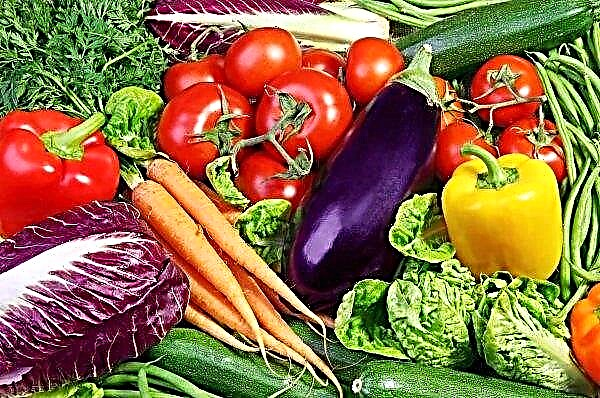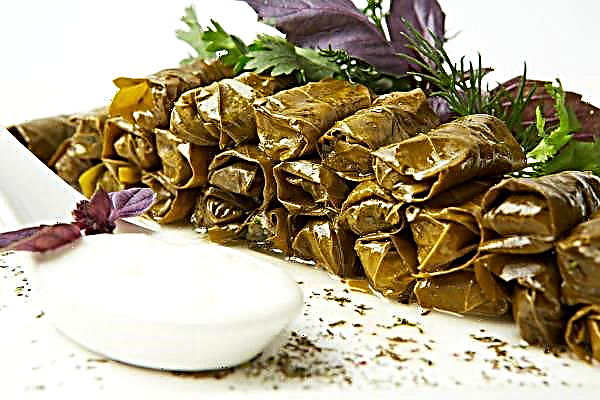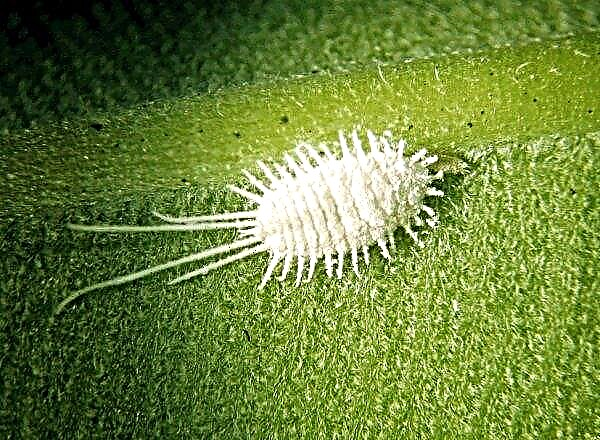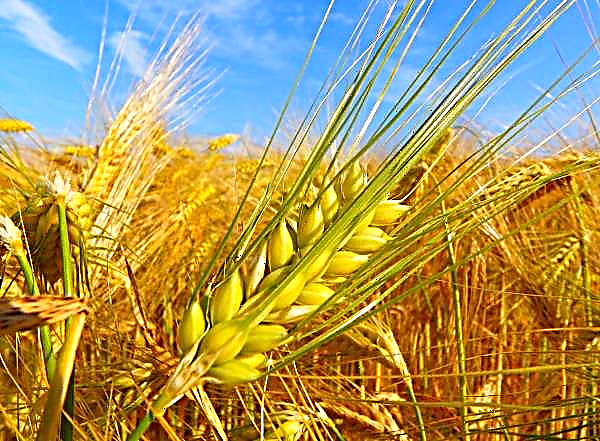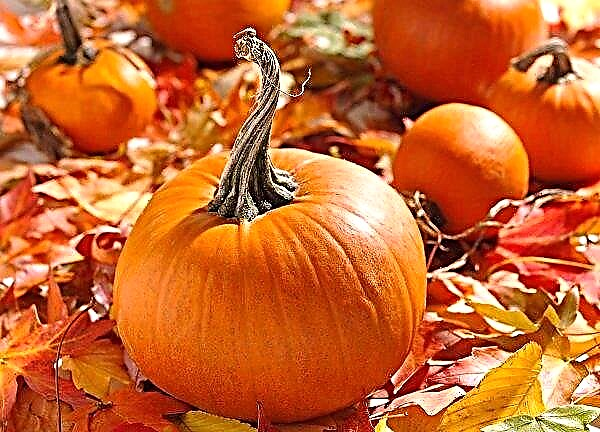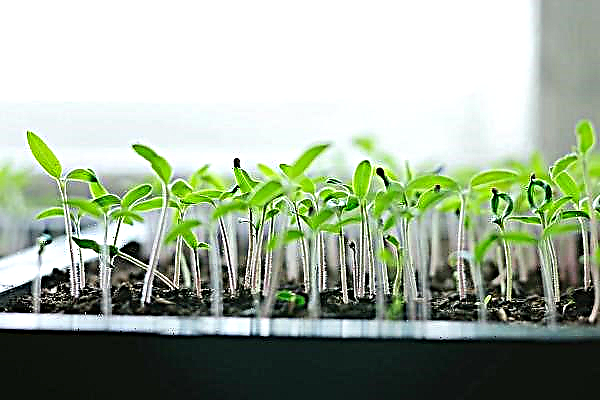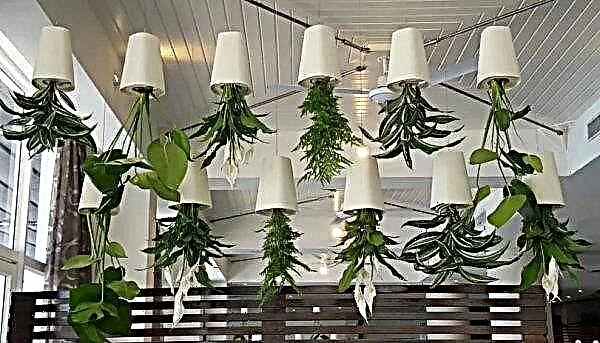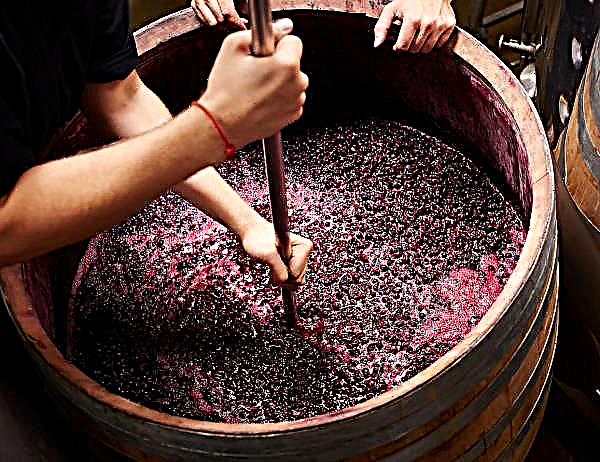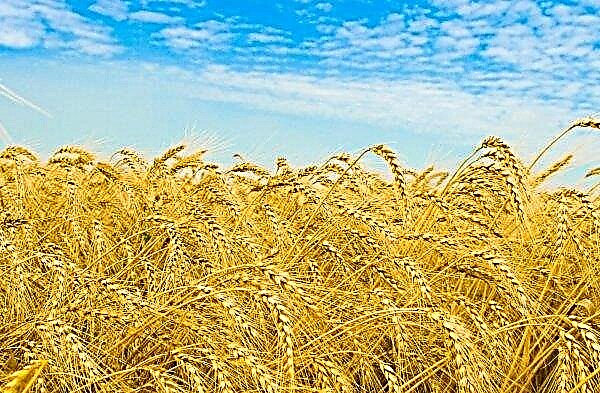Sweet pepper is a versatile product. It is consumed fresh, in salads and borsch dressings, in caviar and other preserves. And one of the brightest representatives of this useful product is Bogdan pepper - a masterpiece of Ukrainian selection.
Description and characteristics of the variety
Pepper Bogdan belongs to the early ripe varieties of bell pepper, has large sweet fruits. It can be grown both in open ground and in greenhouses. A half-stem bush with a height of 50 to 65 cm. The time required for the growth of seedlings and ripening of the fruit is about 100 days. Despite all the advantages, this variety of pepper is not included in the Russian state registry.
Did you know? In past centuries in Europe, pepper served as a currency that could pay for goods and pay fines.
History of Bogdan
Variety pepper Bogdan has Ukrainian roots and was bred by the Soyuz joint venture at the Dnipropetrovsk Agricultural University. The variety is not a hybrid. This is the result of many years of planned selection with a phased consolidation of the necessary economically valuable traits. Thus, if you bought seeds and grew good, large and sweet peppers, you can collect new seeds already from your crop, selecting the most successful specimens.
Yield Features
This variety is characterized by high productivity due to the numerous ovaries on the bushes and large fruits. The combination of this factor with early ripening makes Bogdan pepper one of the most favorite farming crops. In addition, the fruits of Bogdan are equally tasty both fresh and canned.

Description of the fetus
The fruits of the Bulgarian variety are large, yellowish-orange, have the shape of a cone with softly expressed faces. The average weight of one fruit is 200–250 g, length is about 15 cm, diameter - up to 9 cm. The skin is soft, the wall thickness is 6–8 mm.
Advantages and disadvantages of the variety
- The undoubted advantages of the variety include:
- early ripening and early ripeness;
- prolonged fruiting;
- high productivity (from one hundred square meters under good conditions, you can collect up to 1 ton of crop);
- high content of beta-carotene and vitamin C in fruits;
- increased fruit set;
- resistance to various diseases;
- excellent taste and versatility in the use of fruits.
As for the shortcomings, it should be noted the whimsicalness of pepper as a garden crop: it is equally harmful to both excess and lack of minerals, moisture, sun.
- For instance:
- With a lack of potassium, the leaves dry along the edge and curl up into a tube.
- If the pepper lacks nitrogen, the leaves turn gray and gradually degenerate, and an excess of the substance will lead to the falling of flowers.
- A lack of phosphorus will make the bottom of the leaves purple.
- The "marble" color of the leaf indicates that the plant needs magnesium.
- Excess watering leads to putrefactive disease, lack - to drying out the roots.
Features of growing crops
This variety is grown using seedlings. 2–2.5 months before the intended planting in the soil, the seeds are planted for seedlings.

Seed preparation
Seeds are planted 2-4 cm in depth, the distance between them is about 2-3 cm. It is best if the air temperature is not lower than 25 degrees and not higher than 28. It is necessary to immediately maintain the set depth of the bookmark, because in the future, the depth changes when picking or transplantation can lead to decay or drying out of the root system.
Tank selection
When planting, you can use a box filled with soil. As soon as the first full-fledged leaves appear on the seedlings, the seedlings can be planted in separate cups (0.3 or 0.5 l).
Important! Do not be surprised if, after transplanting, the plants slow down their growth. Pepper does not like to be disturbed. To mitigate this condition, spraying with Epin will help.
Soil requirements
Before sowing, the tank is filled with loamy soil halfway and compacted well. The earth must be moist. Having spread the seeds according to the scheme, they are sprinkled with another 5 cm of soil and compacted again.
Seedling Care
To feed seedlings, there are special water-soluble mineral fertilizers. It is best to make them along with watering. Sprouts are watered with warm, settled water.

During the appearance of two true leaves, it is advisable to feed the seedlings with the following solution: 0.5 g of ammonium nitrate, 1 g of potassium fertilizer and 3 g of superphosphate, mixed in 1 liter of water. The next top dressing is carried out in two weeks, with a double dose of mineral fertilizers.
Periodically, you can nourish the seedlings with nettle tincture (for ten parts of water take 2 parts of nettle, knead and insist for several days). It is useful to make such top dressing 2 days before planting in the ground.
Transplanting seedlings into the ground
If enough time has passed from the moment of planting the seeds, make sure that late frosts have passed, and then you can safely plant seedlings in a permanent place. Depending on the region, it can be planted in open ground in May or placed under a covering film.
Early sweet pepper varieties also include:
Variety Bogdan loves heat and moisture, it is better to plant it from the leeward side in sunny areas. When planting, fresh organic fertilizers are contraindicated, they reduce the yield and quality of the fruit.
Planting scheme 35 × 40 cm. It is best if no more than 6 plants are placed on each square meter of the garden. Since pepper does not give side roots, it makes no sense to bury it in the ground. Enough the same depth of landing that was in the cups.
Plant care after transplanting into the ground
Pepper needs a loamy, breathable soil. The best predecessors are legumes, cabbage and cucumber. After them, the vegetable gives the highest yield. Leaving consists in timely watering, top dressing, weeding of beds and garter trellises.
Watering and feeding
Mineral fertilizing is necessary throughout the growing season. Usually they are introduced during watering. Watering is carried out in the evening, the water should be warm (about + 30 ° C).
Important! Do not water the pepper too often, excess moisture can damage the root system and cause black foot disease.
From the moment of transplanting seedlings to a permanent place and until the fruiting begins, it is advisable to feed the pepper at least 3-4 times with chicken droppings. It is good to alternate these activities with foliar mineral dressings, for example, such: a tablespoon of nitrophoska in a bucket of water.
Hilling and loosening the soil
To enrich the soil with oxygen, loosening the soil near the sprouts is considered mandatory at least once every few weeks. Then you can carry out the hilling and mulching. For pepper, mulching with rotten straw is very useful.
Laying a layer 10 cm thick will help to retain moisture in the root zone for longer and reduce the frequency of watering. At the end of all these procedures, the trellis of pepper can be tied up.

Plant formation
On especially hot and at the same time wet days, it is useful to carry out the pinching of Bogdan pepper. This event consists in trimming the side shoots, especially those that are in the lower part of the stem. In dry, hot weather, this procedure is not recommended.
If you carefully study the advice of experienced gardeners, it is noticeable that they converge in one thing: the first flower that appears on the plant must be removed. This makes the crop more productive.
The vegetative period is accompanied by frequent pruning of especially long shoots to avoid shading. All processes below the main branch on the stem are also removed. Pruning is done once every 10 days and after harvesting. You can combine these procedures with loosening and hilling the soil.
Pest and Disease Control
The most common diseases of bell pepper are late blight, black leg, various types of rot. Variety Bogdan is resistant to such diseases and with proper care, you may not even recall their existence.
Pests, such as aphids, teddy bears, slugs, and the Colorado potato beetle, pose a great threat. A preventive measure helps the bear: when planting seedlings an hour before this, the hole is pre-filled with water, and after planting, the plants are thoroughly sprayed. Tincture of wood ash can also protect peppers from pests. Enough 3 sprayings per season.

If aphid appeared on the leaves, then it is necessary to purchase a special serum and dilute it with water, and then treat the plants with this mixture. To consolidate the result, the leaves are sprinkled with finely ground wood ash.
Harvesting and crop applications
The fruits of Bogdan pepper can be harvested when they have reached technical and biological ripeness, that is, when both the appearance and varietal characteristics coincide with the expected (declared) ones. During this period, the beneficial substances in the fruits reach their maximum concentration. Ripe pepper makes a crack when pressed.
Harvested every week, cutting off the pepper along with the stem for better further storage. The growing season usually includes from three to five fees. You need to cut it carefully to save fragile branches. It’s better not to pull the crop, otherwise it will negatively affect the yield next year.Did you know? Chile pepper is in no way connected by the state of the same name. "Chilli" in the Native language of the Indians means "red."
Pepper is so versatile that in addition to fresh consumption, it can also be preserved, frozen for the winter, dried, and added to caviar and other preserves. Harvested for the future, the fruits go on to soups, side dishes and snacks.
Given the whimsicality of this variety with regard to external growing conditions, we can conclude that it is difficult to grow Bogdan pepper. But the result exceeds all expectations. At minimal cost and increased attention to the plant, you get a high yield and excellent quality fruits that can be stored for a long time and profitably sold.

